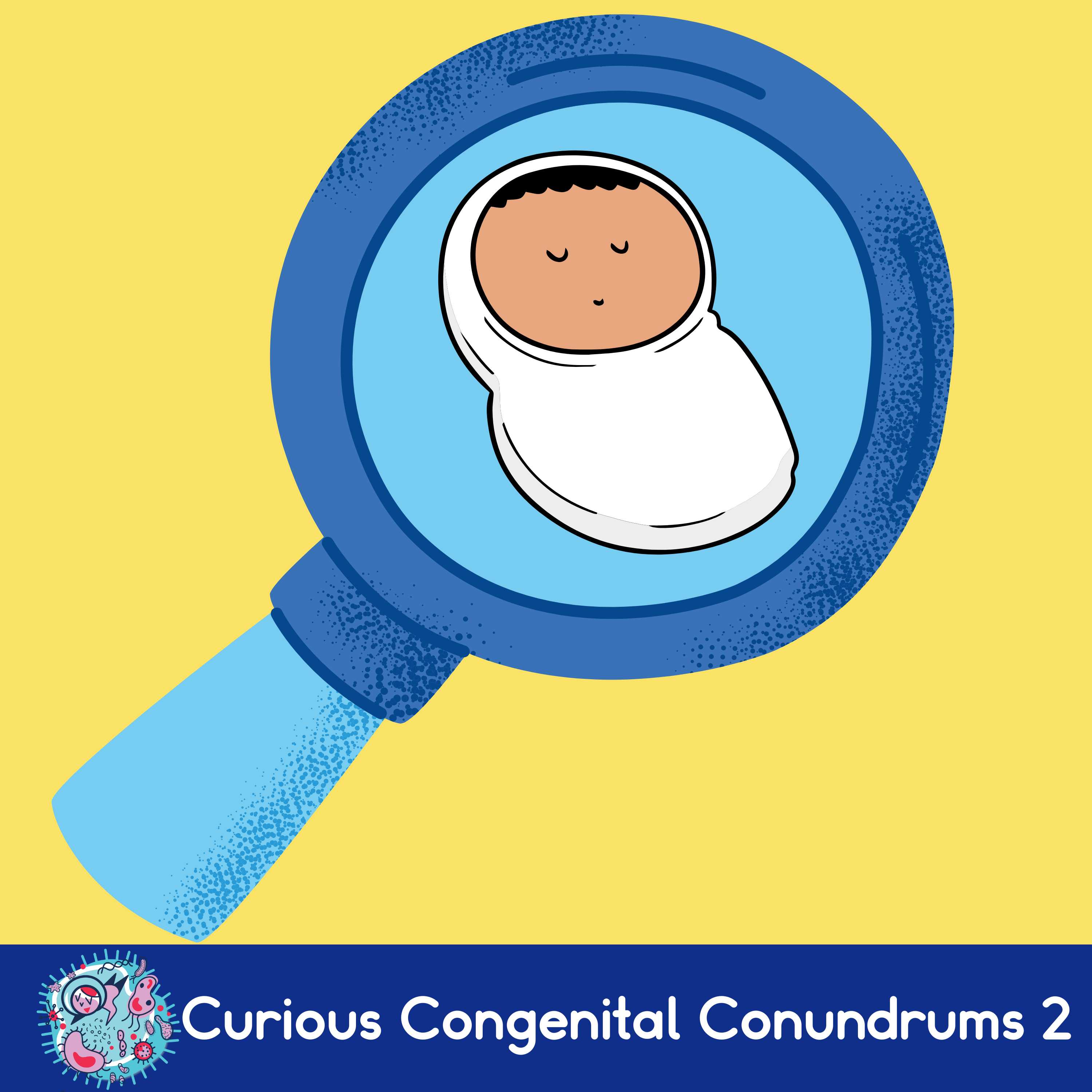Table of Contents
Credits
Hosts: Gunjan Mhapankar, Sara Dong
Guest: Justin Penner
Writing: Justin Penner
Producing/Editing/Cover Art: Sara Dong
Our Guests
Dr. Gunjan Mhapankar

Gunjan Mhapankar completed her medical school training at the University of Western Ontario in London, Ontario. She completed her residency in Pediatrics at the University of Ottawa and is about to start her fellowship in Pediatric Infectious Diseases in Ottawa at the Children’s Hospital of Eastern Ontario (CHEO).
Dr. Justin Penner

Justin completed his medical school and paediatric residency at the University of Manitoba in Winnipeg, Canada. Always having an interest in infectious disease, he subsequently completed an MSc in tropical medicine and international health at the London School of Hygiene and Tropical medicine followed by a fellowship in paediatric infectious diseases at St Mary’s Hospital in London, UK and a fellowship in paediatric immunocompromised ID at Great Ormond Street Hospital. Justin is a member of the PENTA network educational group on congenital infections and has a particular interest in indigenous health in the Canadian North. He currently works as a paediatric infectious diseases consultant at the Children’s Hospital of Eastern Ontario in Ottawa, Canada and at the Qikiqtani General Hospital in Iqaluit, Nunavut and as an honourary academic fellow at Great Ormond Street Hospital.
Culture
Justin discussed watching the Wimbledon and US Open tennis tournaments as well as picking up pickleball
Gunjan spoke about being reminded of how interconnected we all are while working in Canada’s Arctic
Consult Notes
Consult Q
33 week gestation baby with new blistering rash
Key Points
Welcome to our second edition of “Curious Congenital Conundrums”!
This episode is part of a set of 4 (including 79, 80, 81, 82). If you missed the prior congenital series from the previous season, you can check out episodes 36, 37, 39, 41, 43 where we discussed the framework of SCORTCH (as opposed to TORCH) and 4 cases of CMV, syphilis, toxoplasma, and HSV in pregnancy and the congenital or neonatal setting.
Varicella-zoster virus & Neonatal varicella - Introduction / Epidemiology / Transmission
- This virus is responsible for varicella (chickenpox) and herpes zoster (“shingles”)
- Newborns born to mothers who are exposed to VZV or have clinical disease manifestations within 2 weeks of delivery are at the highest risk for infection
- The risk is most increased when mother develops symptoms of varicella infection from 5 days before to 2 days after delivery >> this allows insufficient time for development of maternal IgG and passive transfer of antibody protection to baby
- Postnatal acquisition that occurs between 10-28 days after birth is usually mild, although children remain at greater risk for severe disease than older infants due to their immunologic immaturity
- Nosocomial acquisition can also occur
Clinical features - Neonatal varicella
- The clinical features can be variable, ranging from mild illness (similar to chickenpox in older children) to disseminated infection
- A typical course may include fever within a few days after birth, followed by generalized vesicular rash starting on head and then generalizing (rash often starts as macules and rapidly progresses to papules >> then characteristic vesicular lesions >> crusting)
- Classic description of rash is lesions at various stages of development and healing
- In mild cases, lesions heal within 7-10 days
- Disseminated disease may follow, leading to varicella pneumonia, hepatitis, meningoencephalitis
- Mortality rate has been estimated up to 30%
Diagnosis of neonatal varicella
- Clinical diagnosis can be made based on characteristic appearance of rash in infant born to mom exposed to or with symptoms of VZV
- Diagnosis can be confirmed with PCR, which is the test of choice
- Can be sent from vesicular swabs or scrapings, scabs from crusted lesions, tissue from biopsy samples, and/or CSF
- Direct fluorescent antibody (DFA) on scrapings from active lesions can provide a rapid diagnosis as well, although PCR is more sensitive
- Acute and convalescent serologic testing can be used for diagnosis, although this will not provide a quick answer
Exposure Management
The intervention for management after VZV exposures depends on the timing, mother’s serologic status, and gestational age
- Postexposure prophylaxis with Varizig (varicella-zoster immune globulin, which is purified human immune globulin made from plasma with high level of anti-varicella antibodies) can prevent varicella in exposed neonates or ameliorate disease course
- The AAP/CDC/ACIP recommend administration of Varizig to newborn who have had significant exposure to VZV PLUS one or more of the following:
- Maternal symptoms within five days before or two days after delivery
- Hospitalized preterm infants ≥28 weeks gestation with mother who does not have documented immunization, serologic immunity, or prior documented history of varicella infection
- Hospitalized premature infants <28 weeks gestation or who weight <1000g at birth regardless of maternal history of varicella or vaccination
- AAP Red Book + CDC recommendations
- Health term neonates exposed to VZV postnatally (including infants whose mother’s rash developed >48 hrs after delivery) generally do not require post-exposure prophylaxis
- That is because this type of postnatal infection beyond the immediate newborn period is generally mild
- That said, some experts suggest Varizig in this setting (for exposures occurring up to 2 weeks after birth) if mother does not have evidence of immunity
- Passive immunization should be given as soon as possible if indicated
- The window of passive immunization with Varizig after varicella exposure is up to 10 days
- Centers for Disease Control and Prevention (CDC). FDA approval of an extended period for administering VariZIG for postexposure prophylaxis of varicella. MMWR Morb Mortal Wkly Rep. 2012;61(12):212.
- Efficacy of Varizig in neonates is inferred from observational data (no specific clinical trials in neonates)
- If Varizig is unavailable, IVIG or acyclovir prophylaxis can also be considered
- The AAP/CDC/ACIP recommend administration of Varizig to newborn who have had significant exposure to VZV PLUS one or more of the following:
- Isolation depends on whether there is active disease and the timing of exposure. Patients who require isolation include:
- Active disease: mother with active VZV lesions should be isolated from baby until no longer infectious. Any infant who develops varicella in nursery or NICU should also be isolated
- Maternal exposure 6-21 days before hospitalization: seronegative mother exposed to VZV should be isolated because she may develop varicella while hospitalized
- Isolation may be required for the rare infant who remains hospitalized for >8 days and whose mother is seronegative
- Exposed infants in the NICU are usually cohorted
- The info above is based on US/CDC/AAP guidance. There is also guidance available from UK Health Security Agency (UKHSA Guidelines on PEP for varicella or shingles, Jan 2023). Similar to above except
- Window of maternal infection: 7 days before to 7 days after delivery
- Addition of prophylactic IV acyclovir should be considered in addition to Varizig for maternal infections 4 days before to 2 days after delivery (the IV acyclovir should be started right away as in this timeframe it would be an intrauterine exposure)
- VZV antibody-negative infants under one year who have remained in hospital since birth who are born before 28 weeks gestation or weighed less than 1,000g at birth OR VZV antibody-negative infants who have a severe congenital or other underlying condition that requires prolonged intensive or special care during the first year of life (acyclovir would be preferred to VZIG if >4 weeks old – start to give it at 7 days after exposure)
- VZIG should be offered as soon as possible after exposure with a maximum window of 10 days
- If VZIG is unavailable can use IVIG or acyclovir
- Immune status can be determined by testing the mum or the baby
Treatment for neonatal varicella
- Newborns with severe disseminated VZV infection are treated with IV acyclovir (20 mg/kg IV three times daily aka 60 mg/kg/day) for 10 days
- Antiviral treatment should be started asap (because most viral replication has stopped by 72 hrs after appearance of rash)
- Evidence for ACV in neonatal varicella is limited to case reports and series
- Breastfeeding is encouraged in newborns exposed to or infected with varicella because antibody in breast milk may be protective
Congenital varicella syndrome
We did not focus on congenital varicella as much, but here is a summary of some of the important characteristics
- Most cases of congenital varicella syndrome occur in infants whose mother was infected between 8-20 weeks gestation
- The overall risk of vertical transmission is small compared to other viruses acquired during pregnancy (estimated about 2% risk if infection occurs before 20 weeks and <1% if occurs before 13 weeks)
- Findings of affected infants include:
- Intrauterine growth restriction
- Cicatricial skin lesions (in a dermatomal distribution)
- Ocular defects such as cataracts, chorioretinitis, and others
- Limb abnormalities, which often include hypoplasia of bone and muscle
- CNS abnormalities, such as cortical atrophy, seizures, and intellectural disability
- Fetal demise and mortality after birth can result
- For congenital varicella syndrome, PCR sampling of fetal blood or amniotic fluid or lesions/scars, cornea etc. does not reliably identify cases
- Prenatal ultrasounds may be used to identify severe manifestations of intrauterine VZV infection. These findings include asymmetric limb shortening or malformations, intestinal and hepatic echogenic foci, IUGR, cerebral anomalies (hydrocephalus and microcephaly), and fetal hydrops/demise
- Since manifestations of congenital varicella syndrome result from intrauterine damage to the developing fetus, antiviral therapy in the newborn period would not be expected to have much impact on the sequelae. Need supportive care with rehabilitation services, developmental paediatrics, neurology, orthopaedics, ophthalmology etc.
- Prevention = post-exposure prophylaxis is recommended to non-immune pregnant women. Two main reasons: in first 20 weeks to prevent congenital VZV, and later in pregnancy to prevent severe maternal disease or perinatal acquisition in the neonate around the time of delivery. Aciclovir is safe in pregnancy and typically prescribed to start at 7 day mark after exposure for 7 days. If pregnant women develop signs or symptoms of varicella, they should be treated with treatment dose of acyclovir.
- References:
- Pastuszak AL, Levy M, Schick B, et al. Outcome after maternal varicella infection in the first 20 weeks of pregnancy. N Engl J Med. 1994;330(13):901-905. doi:10.1056/NEJM199403313301305
- Enders G, Miller E, Cradock-Watson J, Bolley I, Ridehalgh M. Consequences of varicella and herpes zoster in pregnancy: prospective study of 1739 cases. Lancet. 1994;343(8912):1548-1551. doi:10.1016/s0140-6736(94)92943-2
Infographics
Goal
Listeners will be able to understand the clinical presentation and management of neonatal varicella
Learning Objectives
After listening to this episode, listeners will be able to:
- Compare and contrast the clinical features of neonatal varicella and congenital varicella syndrome
- Describe the post-exposure management and isolation of mothers and infants after varicella exposure or confirmed disease
- Identify the recommended antiviral for disseminated neonatal varicella infection
Disclosures
Our guests (Gunjan Mhapankar, Justin Penner) as well as Febrile podcast and hosts report no relevant financial disclosures
Citation
Mhapankar, G., Penner, J., Dong, S. “#82: Curious Congenital Conundrums – Pox Puzzle”. Febrile: A Cultured Podcast. https://player.captivate.fm/episode/504ed023-689d-4931-a73b-359b80e19426


